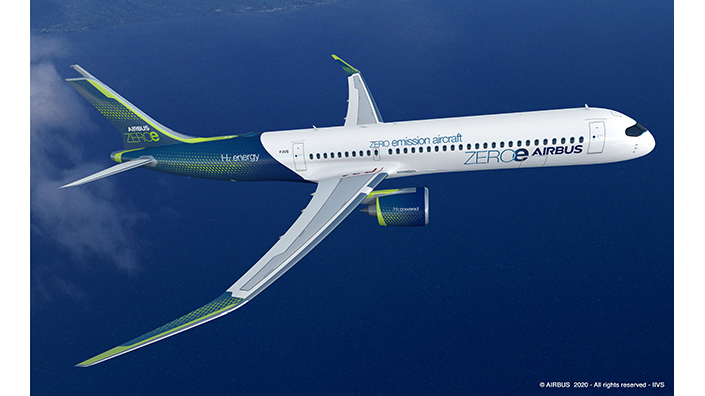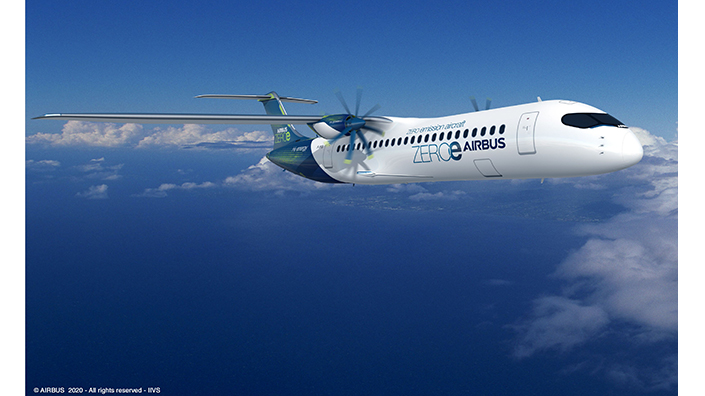Engineering news
The concepts each represent a different approach to zero-emission flight, with various propulsion technologies and aerodynamic configurations. While two of the concepts have a similar profile to conventional airliners, the ‘blended-wing body’ concept offers a striking alternative.
All of the concepts rely on hydrogen as a primary power source – an option which Airbus believes holds ‘exceptional promise’ as a clean aviation fuel, which could help decarbonise the industry.
“This is a historic moment for the commercial aviation sector as a whole and we intend to play a leading role in the most important transition this industry has ever seen. The concepts we unveil today offer the world a glimpse of our ambition to drive a bold vision for the future of zero-emission flight,” said Guillaume Faury, Airbus CEO. “I strongly believe that the use of hydrogen – both in synthetic fuels and as a primary power source for commercial aircraft – has the potential to significantly reduce aviation's climate impact.”
The three concepts, all codenamed ZEROe, are:

· A turbofan design (120-200 passengers) with a range of 2,000+ nautical miles (3,704km), capable of operating trans-continentally and powered by a modified gas turbine engine running on hydrogen, rather than jet fuel, through combustion. The liquid hydrogen would be stored and distributed via tanks located behind the rear pressure bulkhead.

· A turboprop design (up to 100 passengers) using a turboprop engine instead of a turbofan and also powered by hydrogen combustion in modified gas turbine engines, which would be capable of traveling more than 1,000 nautical miles (1,852km), making it a perfect option for short-haul trips.
· A ‘blended-wing body’ design (up to 200 passengers) concept, in which the wings merge with the main body of the aircraft with a long range similar to that of the turbofan concept. The exceptionally wide fuselage opens up multiple options for hydrogen storage and distribution, and for cabin layout.
“These concepts will help us explore and mature the design and layout of the world’s first climate-neutral, zero-emission commercial aircraft, which we aim to put into service by 2035,” said Faury.
“The transition to hydrogen, as the primary power source for these concept planes, will require decisive action from the entire aviation ecosystem. Together with the support from government and industrial partners, we can rise up to this challenge to scale-up renewable energy and hydrogen for the sustainable future of the aviation industry.”
In order to tackle these challenges, airports will require significant hydrogen transport and refuelling infrastructure to meet the needs of day-to-day operations. Airbus said support from governments will be key to meet the ambitious objectives, with increased funding for research and technology, digitalisation, and mechanisms that encourage the use of sustainable fuels and the renewal of aircraft fleets to allow airlines to retire older, less environmentally friendly aircraft earlier.
Want the best engineering stories delivered straight to your inbox? The Professional Engineering newsletter gives you vital updates on the most cutting-edge engineering and exciting new job opportunities. To sign up, click here.
Content published by Professional Engineering does not necessarily represent the views of the Institution of Mechanical Engineers.